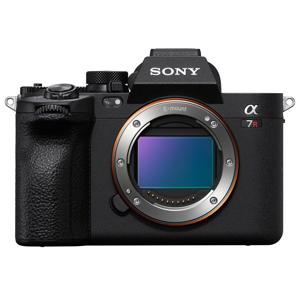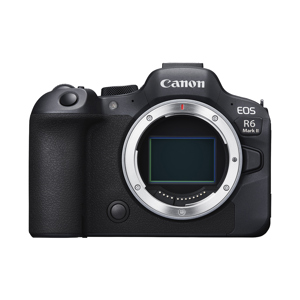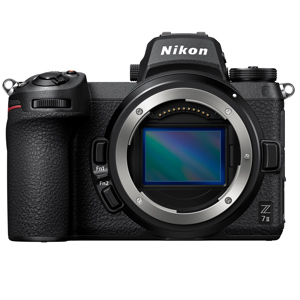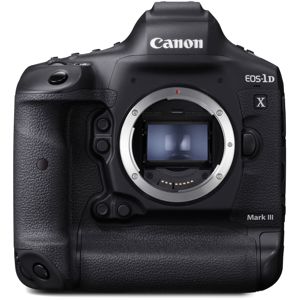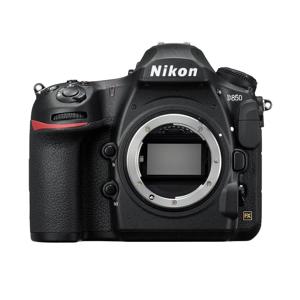22.22.29 Mirrorless vs DSLRs: How Do They Compare? | |
What is a DSLR Camera?DSLR stands for digital single-lens reflex. It’s the digital version of a film SLR camera, meaning it uses a digital imaging sensor instead of photographic film to capture images. Light enters through the lens, which is reflected off a mirror in the camera body that bounces light into the viewfinder. When you click the shutter, the mirror flips down and exposes the digital sensor, which absorbs the light and captures the image. What is a Mirrorless Camera?With a mirrorless camera, the lack of a mirror means there isn’t a natural way to preview the image through the viewfinder (more on that later). But the more simple, streamlined design also allows for a considerably smaller and more portable device. 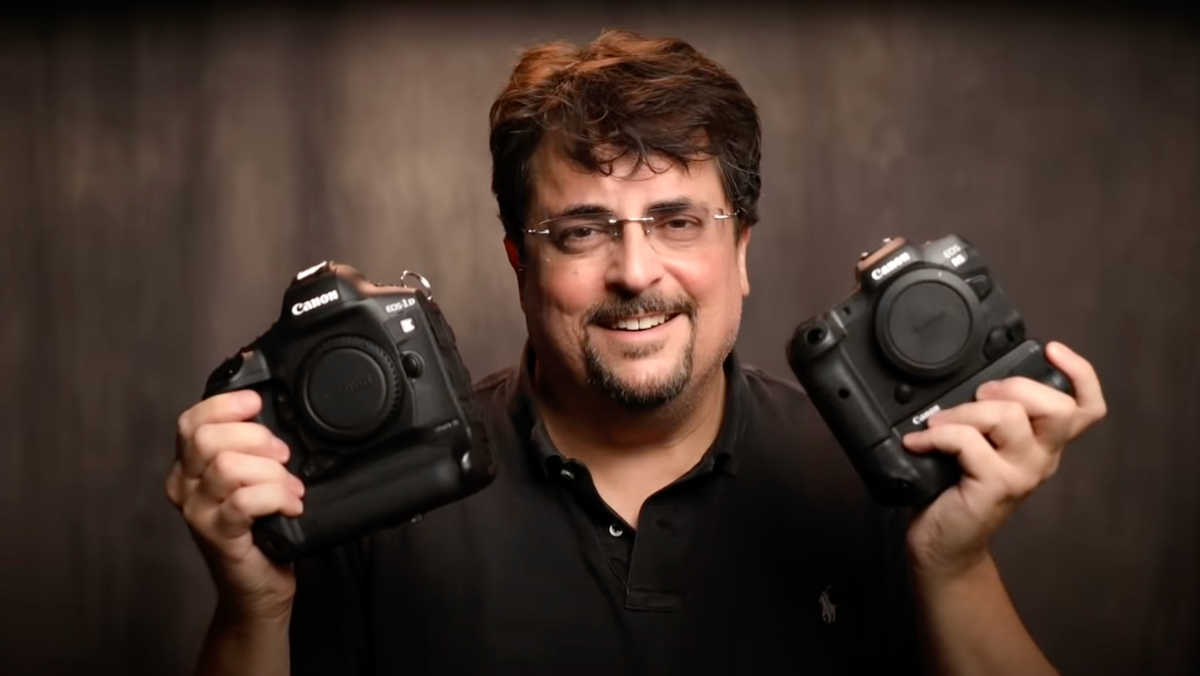
Mirrorless vs DSLR Camera ComparisonTo fully compare mirrorless vs DSLR cameras, let’s take a look at how they differ when it comes to the most important camera specs and features: Size & WeightSize and weight are always important when it comes to cameras. In most cases, you’re going to be using them in situations that will likely require you to move around, so the more portable the camera, the better. One of the main selling points of a mirrorless camera over a DSLR is its portability and significantly lighter body weight. But that’s not always a good thing, because most mirrorless lenses weigh about the same as DSLR lenses, so if you tend to use a lot of bulky lenses, the bigger and heavier of the two cameras would probably be the better option due to the fact that it would be much harder to balance the combination of a lightweight camera and a heavy lens. DSLR cameras are typically bigger and heavier than their mirrorless counterparts as they need fit a mirror and its housing, a pentaprism, and a secondary autofocus mirror as well as other parts of the autofocus system. Still, some APS-C DSLR cameras can also be lightweight. PriceCameras are a big investment. When it comes to value for money, the DSLR wins the game. You can purchase an entry-level to mid-level DSLR camera at an affordable price and still get good specs and an array of features. With mirrorless cameras, anything on the cheaper end of the spectrum will be lacking in resolution, battery life, and will not have a viewfinder. On the more professional, higher end of the spectrum, however, DSLR and mirrorless cameras are evenly matched. You get the same amount of features and roughly the same power and performance with either a mirrorless or DSLR, and the price range will largely be the same. LensesSince DSLRs have been veterans on the market for the longest time, it’s a given that they have a wider selection of lenses that you can choose from. For now, a DSLR is the better option if having a larger selection of lenses is important to you. But as mirrorless cameras continue to grow in popularity, their lens offerings are now slowly catching up. Micro Four Thirds format cameras already have a growing number of lenses that can be purchased from Olympus and Panasonic. If mirrorless camera users need to use DSLR-sized lenses, adapters can be bought in manufacturer’s stores. However, doing so can affect some features of your mirrorless camera, such as:
So who won this round? DSLR or mirrorless? In this case, the veteran camera clearly has the edge. Battery LifeMirrorless continues to fall short here, which can be a big negative for photographers shooting in the field for long stretches. Smaller mirrorless camera bodies equal smaller batteries, and mirrorless camera sensors are perpetually active, which can drain battery life in a jiffy. Extra batteries aren’t expensive, but it’s an added inconvenience all the same. ViewfinderViewfinder superiority partially comes down to personal preference between the two systems. Using a DSLR, the image shown through the viewfinder is what’s actually coming through the lens. The mirror within the DSLR reflects the image up to the viewfinder. The mirrorless system, as you might guess, doesn’t have that mirror to work with, so the viewfinder image is created electronically. Although it’s not as simple of a process, this mirrorless viewfinder system has the advantage of reflecting the image with the shutter speed, ISO, white balance and other in-camera settings taken into account. Shooting in the FieldThree factors that determine how easy a camera is to use in the field is its size, its ability to shoot in low-light environments and its auto-focus capabilities. Here the distinction between DSLRs and mirrorless is a mixed bag. Mirrorless cameras clearly have the edge in size, but this is becoming less true because of more compact entry-level DSLRs. Bulky lenses often diminish the differences between the two designs as well. Still, if you’re looking for the most compact system possible, mirrorless is the horse to bet on. As for autofocus and low-light shooting, DSLRs have historically reigned supreme, but this has begun to change with some mirrorless low-light monsters like the Sony a7S III. Mirrorless autofocus systems have improved greatly as well, with cameras like the Sony A6400 now boasting unparalleled autofocus speeds. However, DSLRs still remain superior for autofocusing on fast-moving targets, which can be critical in sports or wildlife photography. Image QualityBoth DSLRs and mirrorless cameras are capable of fantastic image quality, partially because either design is capable of using the latest and greatest full-frame sensors on the market. Sensor size, after all, is the biggest factor that dictates image quality. While things like autofocus, low-light shooting, and camera resolution will all factor into how good the final image is, neither camera has an edge over the other. If you were to compare image quality between two evenly matched DSLR and mirrorless cameras in a controlled environment, you will see that they are about the same. If you were to decide between a mirrorless or DSLR based solely on sensor size, keep in mind that both have the same standard camera sensor sizes, such as Four Thirds, APS-C, 35mm full frame, and even medium format (yes, medium format mirrorless cameras do exist). A DSLR with an APS-C sensor will have roughly the same image quality as a mirrorless APS-C camera, and the same goes for a full-frame DSLR and its mirrorless counterpart. Video QualityVideo recording is a feature that every camera these days can perform—but it will all boil down to how good the quality of video these two different cameras can produce. DSLRs may have a wide range of choices when it comes to lenses, but only high-end DSLR models can produce 4K or Ultra HD quality videos. That’s why, in this case, mirrorless cameras have the edge because it has the ability to produce such quality even with some affordable models. Image and Video PlaybackIn spite of the differences between mirrorless cameras and DSLRs, they still have their middle ground. In this battle between DSLR vs mirrorless, it’s in image and video playback where there is no clear winner. Both have the typical 3-inch LCDs, which is sufficient for users. Other mirrorless cameras like the Olympus OM-D E-M10 IV have a slight edge because it has a tilting rear touchscreen display. For DSLRs, higher-end models have the articulating screen, which is perfect for shooting and viewing photos and videos. Both DSLR and mirrorless cameras also allow users to view their images via HDMI output to a computer or TV screen. 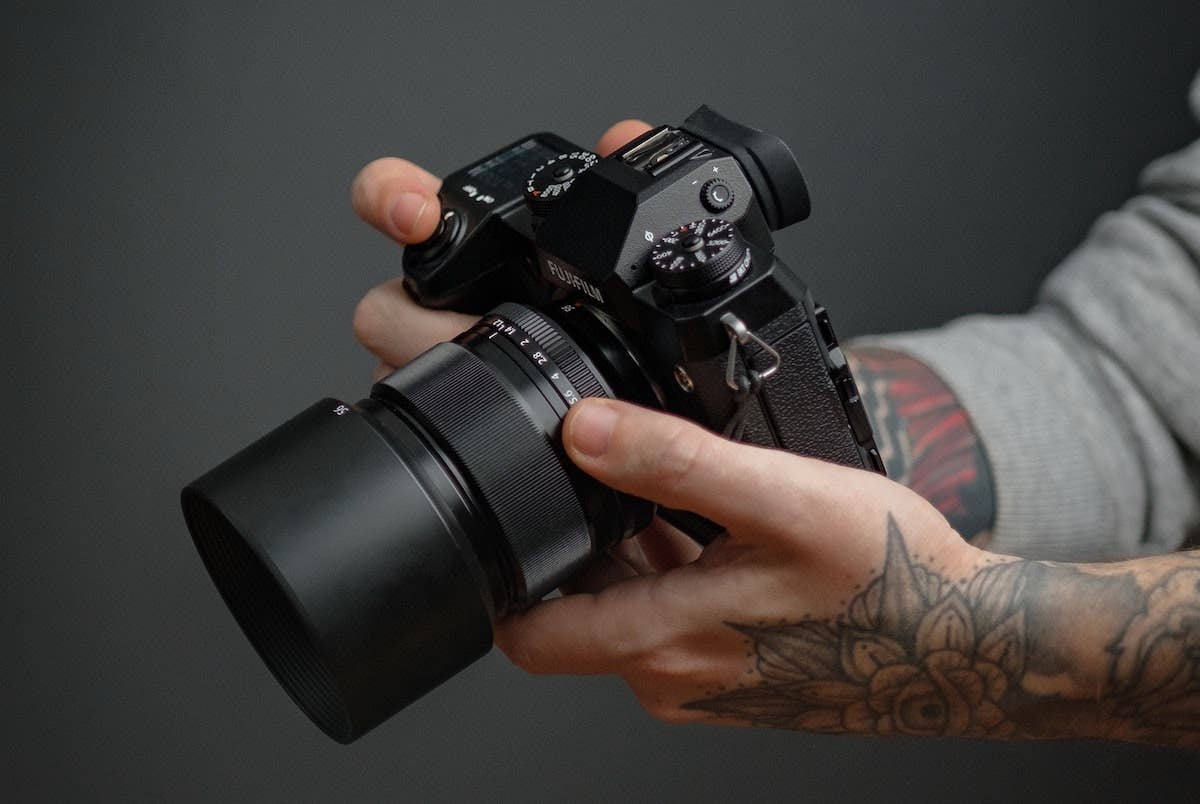
Perks of a Mirrorless CameraSmaller and more lightweightMirrorless cameras, regardless of format, are almost always smaller and lighter than comparable DSLRs because they don’t require a relatively bulky, heavy mirror box and the mechanisms needed to move a reflex mirror into and out of the light path. As a result, they have fewer moving parts, are quieter in operation than traditional DSLRs, and are inherently less prone to causing shake-inducing vibration. Rapid refresh ratesToday’s top mirrorless cameras incorporate high resolution EVFs or OLED EVFs with incredibly rapid refresh rates (60 times per sec and up) that provide a brilliant, 100% coverage, high-magnification, eye level viewing image that rivals that of most optical viewfinders (OVFs), and provide continuous viewing without momentary finder blackout even as the shutter fires. Great for low-light shootingThe EVFs in mirrorless cameras have the advantage of allowing users to preview the captured (complete with exposure corrections and custom settings) in real time. This makes it easier, for example, to compose subjects in very dim light because the gain is automatically increased to make them more visible. Hybrid AF systemsMirrorless cameras typically include Hybrid AF systems that combine the advantages of fast, decisive on-sensor phase-detection AF (PDAF) and the precision of contrast-detect AF (CAF), taking their AF performance to a level surpassing that of all but top-tier DSLRs. Continuous AF and focus trackingFurther advantages of the hybrid CAF/PDAF systems in mirrorless cameras include the ability to provide continuous AF and focus tracking before and during the exposure, a crucial factor when shooting still images at high burst rates, or capturing clean HD video without visible or audible “hunting.” Layered viewfinder informationMirrorless cameras enable the layering of viewfinder information, such as camera settings, levels, histograms, focus peaking, etc., and can also provide an instant magnified image of the focusing area and allow playback of images and videos in the EVF. Flexibility with lensesMirrorless cameras allow the seamless use of existing “open source” lenses by using simple mount adapters to expand the camera’s optical array. The possibilities include mounting lenses from other lens systems, classic rangefinder lenses, and lenses from obsolete or obscure systems. The shorter flange back (mount to sensor) distance of mirrorless cameras makes it easier to design high-quality lenses, particularly wide-angles, that provide better edge and corner illumination and greater light transmission efficiency. Continuous Live ViewMirrorless cameras provide continuous Live View via the LCD or EVF and provide previewing using either viewing system when shooting video, with no loss of AF capability. Mirrorless Camera AdvantagesAt their best, mirrorless system cameras combine the advantages of both DSLRs and point-and-shoots, providing lens interchangeability, ultra-high image quality, and the entire high-end feature array of middle- and upper-tier DSLRs in smaller, lighter, handier form factors. Not surprisingly, as the popularity of MSC’s has dramatically increased over the past years, camera makers and independent lens manufacturers have vastly expanded their lens offerings, vastly increasing the creative optical options available to consumers, and marketing opportunities for dealers. The MSC market continues to be technologically driven, with many of the latest high-end models offering higher-res sensors, enhanced image-processing software for greater responsiveness, faster burst rates, 4K video capture, full Wi-Fi connectivity and GPS, multi-axis in-body image stabilization, and enhanced viewing options such as hi-res tilt/swing and touch screen LCDs, and OLED EVFs. However, entry-level and middle-tier MSCs have also benefitted from these technological advances. The result is an array of enticing new models offering features that have migrated down from higher-end models, often with simplified user interfaces, and at very competitive prices. 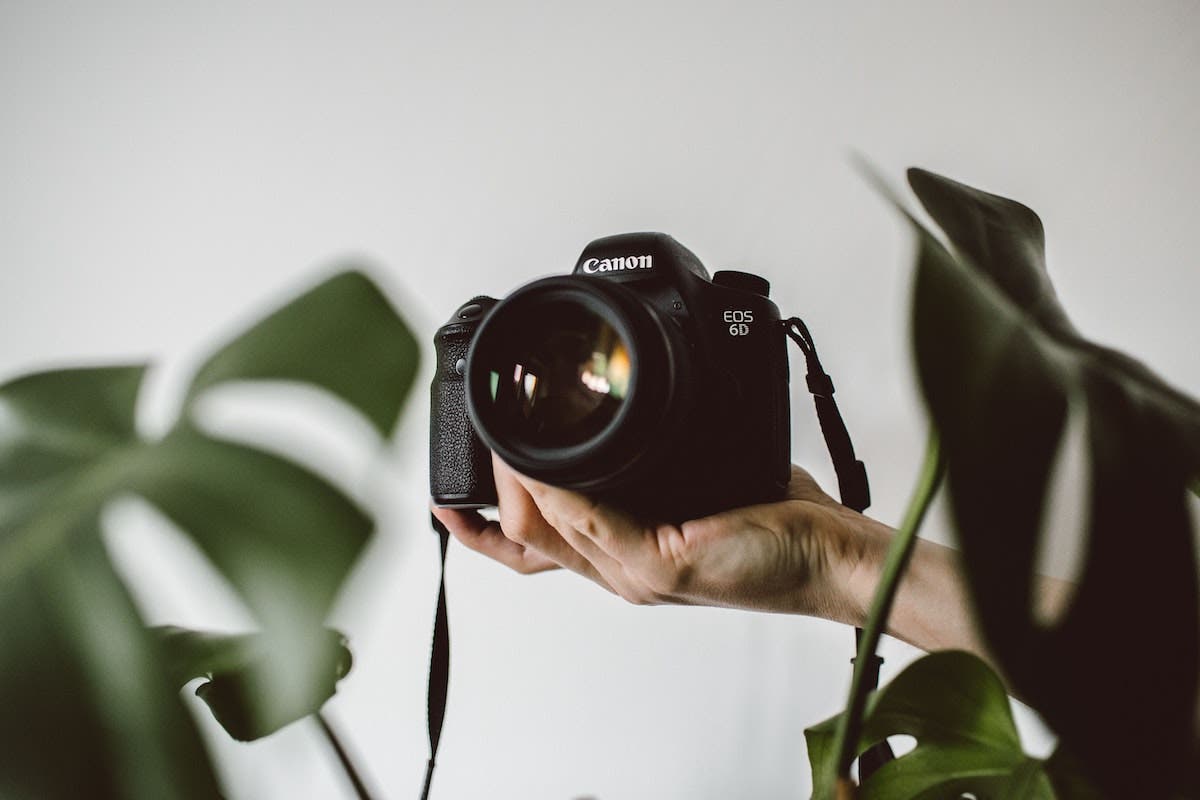
Perks of a DSLR CameraSuperior optimal viewfindersMiddle- and upper-tier pro models with solid glass pentaprism optical viewfinders, provide a brilliant “real feel” viewing image that no mirrorless EVF can quite match. Whether this is important to you is, of course, subjective, but many photographers accustomed to optical viewfinders consider it a definite plus. Easy access to control settingsDigital SLRs are generally larger than mirrorless cameras and this allows more room for the placement of dedicated controls for various camera functions such as ISO, exposure compensation, white balance, etc. The control ergonomics of the best DSLRs often have an edge over their current mirrorless counterparts in this respect. Larger batteriesThe use of larger batteries provides greater capacity than smaller batteries. With most pro-caliber DSLRs you can shoot all day without running out of battery power, and that’s not always true with comparable mirrorless cameras. Ergonomic designPhotographers with large hands often prefer DSLRs. DSLRs have evolved into a very ergonomic shape and some of them are more comfortably contoured than their mirrorless counterparts. Some shooters feel that a heavier camera, like the DSLR, also provides a more stable shooting platform than some of the smaller, lighter mirrorless cameras. Again this is subjective and the decision is personal. Durable designIt’s hard to beat the record of durability, reliability, and consistent performance under adverse conditions of a DSLR. Additionally, DSLRs offer in-body or on-lens image stabilization systems to minimize the effects of mirror-induced camera shake. That’s why many pros are reluctant to make the switch. Spectacular imaging performanceDSLRs offer very well developed lens systems that include numerous professional prime and zoom lenses that deliver spectacular imaging performance. While mirrorless systems have yet to match the phenomenal optical arrays available for the leading DSLR systems, this will happen sooner rather than later as both camera makers and independent lens makers are rapidly expanding and upgrading their optical offerings. DSLR Camera AdvantagesUnquestionably when you compare mirrorless vs DSLR cameras, you’ll find supremely versatile, viable systems capable of the highest levels of imaging performance. While we hope it helps to enumerate the advantages of each, the choice is inherently subjective, and a lot depends on what equipment you have now and in what direction you want to take your creative photography. As they say, it’s up to you, but the current crop of cameras of each type deliver awesome performance, and whatever you decide you’re not likely to be disappointed.
Mirrorless vs DSLR: Which is the Better Camera?DSLR and mirrorless cameras are two different beasts with their own strengths and weaknesses. The DSLR offers a wider selection of interchangeable lenses, longer battery life, and better low-light shooting thanks to the optical viewfinder. On the other hand, mirrorless cameras are lighter, more portable, offer better video quality even in lower-end models, and can shoot more images at faster shutter speeds. Today’s mirrorless and DSLR cameras both display just how far digital camera technology has come, as both carry the ability to produce never-before-seen image quality with stunning performance and convenience. DSLRs may reign supreme today, but with the rapid pace that photographic technology is advancing, who knows what tomorrow’s photographers will prefer. It’s just a matter of time until we find out who wins: DSLR or mirrorless? Is a Mirrorless Camera Better than a DSLR?When it comes to mirrorless vs DSLR, there is no clear winner. Each has its strengths and may be a better choice for a particular situation or workflow. The best camera a photographer can have is the camera that fits her or his technical skills, artistic style, and shooting environment. A mirrorless camera is lightweight, silent, and fast. It allows you to get unnoticed and have the camera at hand all the time. A DSLR has an optical viewfinder that provides a realistic view. It also has a longer battery life and more lens options. On top of everything, there is a strong personal preference that each photographer is entitled to have. Do Professionals Use DSLR or Mirrorless?One of the myths of the mirrorless vs DSLR debate is that professional photographers use only DSLRs. It isn’t true. Many professional photographers prefer a mirrorless camera when photographing landscapes or wildlife because they are easy to carry, fast, and quiet. You’ll find photojournalists and travel photographers with a small mirrorless in their bag too. At the same time, you’ll find photographers forever in love with their DSLRs. In the world of professional photography, the solution to the mirrorless vs DSLR question is to have one of each. You can have two sets of camera, lens, filters, and settings ready to go. Especially when you photograph an unpredictable subject such as wildlife, being prepared makes all the difference. Recommended Mirrorless CamerasSony Alpha a7R V Mirrorless Digital Camera Body
Alpha a7R V Mirrorless Digital Camera Body $3898 Shop NowAs one of the top names in mirrorless photography, Sony regularly introduces revolutionary tech to solve common frustrations for photographers. The a7R V is the perfect example of that, and it’s packed with wonderful features. They include a new AI Processing Unit, advanced auto-focusing capabilities, and an updated BIONZ XR engine that increases processing speeds over prior models by up to 8 times. The new 4-axis multi-angle LCD monitor makes it easier to shoot from any position, too, even while tracking stills and videos on the large 3.2” screen. Key features:
Why did we choose this mirrorless camera?The Alpha a7R V’s intuitive, Real-time Recognition AF system makes a big difference in subject tracking and sharpness when shooting portraits, wildlife, landscapes, sports, and pro-quality video. Canon EOS R6 Mark II Mirrorless Digital Camera Body, Black
EOS R6 Mark II Mirrorless Digital Camera Body, Black $2499 Shop NowCanon’s mirrorless cameras keep improving with each generation, and the R6 Mark II proves that point with several notable upgrades. Featuring AI-based deep-learning AF that’s 80 percent faster than the first R6 edition, the R6 Mark II can lock onto fast moving targets even in the darkest environments. An upgraded internal image stabilization system compensates up to 8 stops for improved handheld long exposures, video recording, and bracketed exposures when shooting with RF lenses. Key features:
Why did we choose this mirrorless camera?Canon delivers a user-friendly interface that photographers of all experience levels will appreciate. Plus, you can use all of your EF and EF-S lenses with the addition of an adapter. Nikon Z 7II Mirrorless Digital Camera
Z 7II Mirrorless Digital Camera $2596.95
| |
|
| |
| Total comments: 0 | |
 When mirrorless cameras first came on the market in 2009, they became a potential opponent for the mighty DSLR—the current king of the photography world by popular opinion. A fierce debate then arose within the photography world comparing mirrorless vs DSLRs. Which is superior? The debate warrants continuous updating.
When mirrorless cameras first came on the market in 2009, they became a potential opponent for the mighty DSLR—the current king of the photography world by popular opinion. A fierce debate then arose within the photography world comparing mirrorless vs DSLRs. Which is superior? The debate warrants continuous updating. 